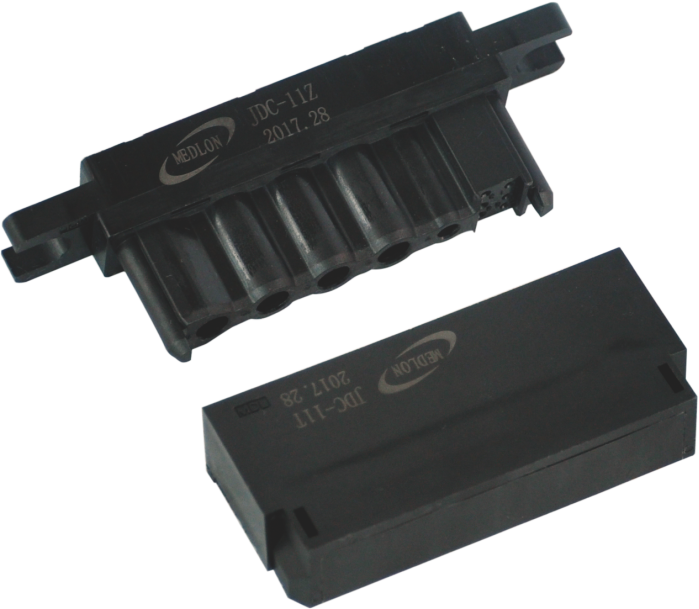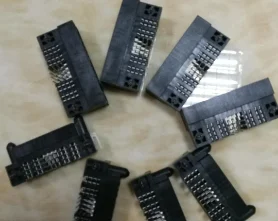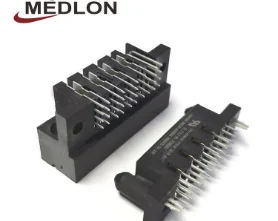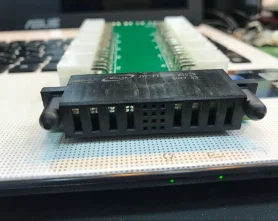



feature: Input voltage: maximum 220V, minimum 110V Output voltage: generally 5V or 12V Input current: Varies according to output voltage and load power Output power: depends on load capacity and output voltage Working frequency: generally 50Hz or 60Hz Advantage: 1. Versatility: Combination AC-DC and split power options are available, and the module can be configured to fit most designs 2. Convenient and flexible: easy to maintain and replace. 3. Safe and reliable: waterproof, dustproof and durable, 4. Quick connection: plug-in connection, can be quickly connected and disconnected, convenient for daily use 5. Multiple interface options: such as circular connectors, square connectors, threaded connectors, etc.
| Type: | board to board power connector | Packaging Details: | carton |
| Application: | Electric equipment | Supply Ability: | 10458 Piece/Pieces per Week |
| Place of Origin: | Chian,shenzhen | Port: | shenzhen |
| Brand Name: | Medlon | Quantity (pieces): | > 906 |
| Model Number: | Customized options | Lead time (days): | To be negotiated |
| Contact barrel wire size: | 6-14AWG 13.3-3.3m㎡ | Feature: | makes assembly quick and easy |
| AVG contact resistance: | <131 | system: | Flat wiping contact system |
| Contact material: | Silver plated copper | Color: | Colored modular housings |
| Voltage rating: | 619V | Application: | Electric vehicles;Medical equipment;Power supply;Electric equipment |
| Rated current: | 56A | MOQ: | 30 |



1.What kind of material is commonly used for making board to board power connectors?
We focus on innovation and continuous improvement to maintain a competitive advantage. Power connectors are typically made from metals such as copper, aluminum, and brass, as well as plastics such as nylon and polycarbonate.
2.How does the operating temperature range affect the performance of a board to board power connector?
The operating temperature range of a power connector affects its performance in several ways. Higher temperatures can cause the connector to become brittle and more prone to cracking or breaking. Higher temperatures can also cause the connector to expand, which can lead to poor contact between the connector and the mating part. Lower temperatures can cause the connector to become stiff and difficult to insert or remove. Additionally, lower temperatures can cause the connector to become brittle and more prone to cracking or breaking.
3.Are there any special tools or techniques required for installing a board to board power connector?
Our board to board power connector products undergo strict quality control to ensure customer satisfaction. Yes, special tools and techniques are required for installing a power connector. Depending on the type of power connector, you may need a crimping tool, soldering iron, wire strippers, and/or heat shrink tubing. Additionally, you may need to use specific techniques such as soldering, crimping, and/or heat shrinking to ensure a secure connection.
4.How do you select the appropriate locking mechanism for a board to board power connector?
1. Consider the application: The type of locking mechanism you choose should be based on the application and the environment in which the power connector will be used. For example, if the connector will be used in a harsh environment, you may want to choose a locking mechanism that is more robust and resistant to corrosion. 2. Consider the size: The size of the power connector should also be taken into account when selecting a locking mechanism. If the connector is too small, then a locking mechanism that is too large may not fit. 3. Consider the cost: The cost of the locking mechanism should also be taken into account when selecting the appropriate locking mechanism for a power connector. If the cost is too high, then it may not be feasible to use the locking mechanism. 4. Consider the safety: The safety of the power connector should also be taken into account when selecting the appropriate locking mechanism. If the locking mechanism is not secure enough, then it could lead to accidental disconnection of the power connector.
5.About board to board power connector origin
The origin of power connectors can be traced back to the early days of electricity. In the late 19th century, the first electrical connectors were developed to connect electrical devices to power sources. These connectors were made of metal and were designed to be inserted into a socket. Over time, the design of power connectors has evolved to include a variety of shapes and sizes to accommodate different types of electrical devices. Today, power connectors are used in a wide range of applications, from consumer electronics to industrial machinery.

6.Does the size and configuration of a board to board power connector affect its performance?
We are a professional board to board power connector company dedicated to providing high quality products and services. Yes, the size and configuration of a power connector can affect its performance. The size of the connector determines the amount of current it can handle, and the configuration of the connector affects the amount of power it can deliver. For example, a larger connector can handle more current than a smaller one, and a connector with more pins can deliver more power than one with fewer pins.
7.About board to board power connector patent
A power connector patent is a type of patent that covers the design and/or function of a power connector. This type of patent is typically used to protect the design of a power connector from being copied or used without permission. It can also be used to protect the function of a power connector, such as the way it connects to a power source or the way it transmits power. Power connector patents can be used to protect a wide range of products, from small electronic devices to large industrial machines.
8.What is the maximum temperature that a board to board power connector can withstand?
We have established a good reputation and reliable partnerships within the board to board power connector industry. The maximum temperature that a power connector can withstand depends on the type of connector and the materials used in its construction. Generally, power connectors are designed to withstand temperatures up to 125°C (257°F).
9.How do you choose the right board to board power connector for a specific application?
We have established a good reputation and reliable partnerships within the board to board power connector industry. 1. Consider the current and voltage requirements of the application. 2. Determine the type of power connector that is compatible with the application. 3. Consider the environmental conditions in which the power connector will be used. 4. Consider the size and shape of the power connector. 5. Consider the cost of the power connector. 6. Consider the availability of the power connector. 7. Consider the safety features of the power connector.
10.About board to board power connector warranty
Power connector warranties vary depending on the manufacturer. Generally, power connectors are covered by a limited warranty that covers defects in materials and workmanship for a specified period of time. The warranty period may range from one year to five years, depending on the manufacturer. Some manufacturers may also offer extended warranties for their power connectors. It is important to read the warranty information carefully before purchasing a power connector to ensure that it is covered by the warranty.

11.Can board to board power connectors handle power surges or fluctuations?
We focus on teamwork and communication to achieve common goals, We attach great importance to this detail. Yes, power connectors can handle power surges or fluctuations. However, it is important to use the correct type of power connector for the application. Some power connectors are designed to handle higher levels of power surges or fluctuations than others.
12.What is the maximum number of pins available for board to board power connectors?
We have established long-term and stable partnerships with our suppliers, so we have great advantages in price and cost and quality assurance. The maximum number of pins available for power connectors depends on the type of connector being used. For example, the ATX power connector used in most desktop computers has 24 pins, while the Molex connector used in many older computers has 4 pins.
13.Can board to board power connectors be used in low voltage applications?
We have established long-term and stable partnerships with our suppliers, so we have great advantages in price and cost and quality assurance. Yes, power connectors can be used in low voltage applications. However, the power connector must be rated for the specific voltage and current requirements of the application.
Tag:8 pin processor power connector,6 pin pci express power connector,atx cpu power connector 4 pin to 8 pin,16 pin power connector gpu,3060 ti fe power connector
Prev:boat power connector